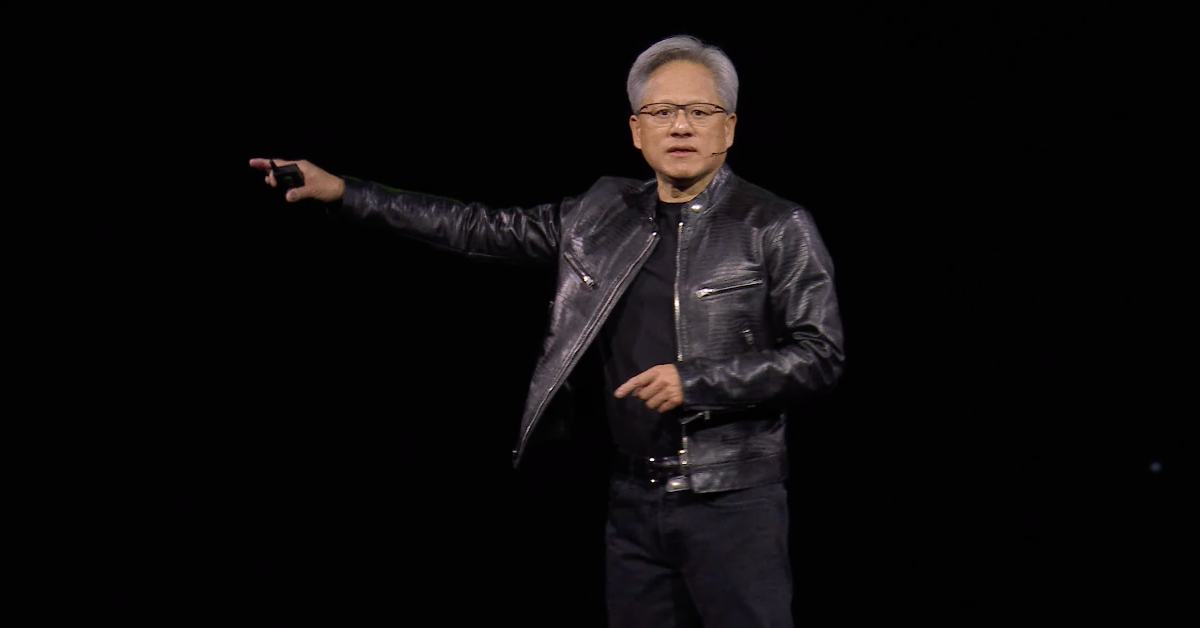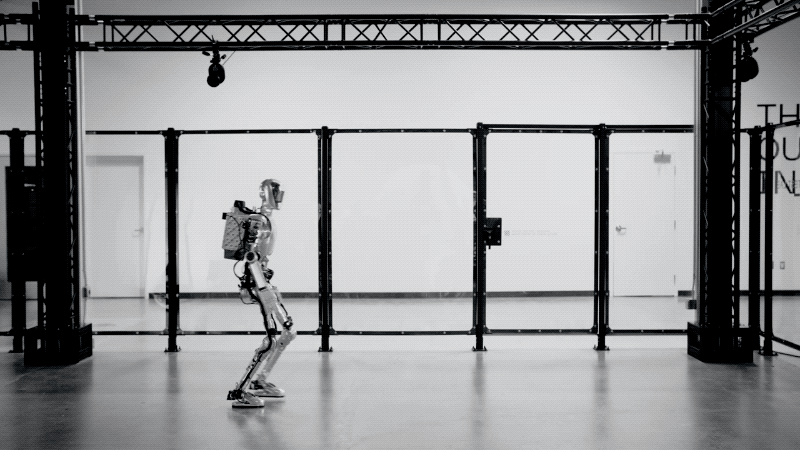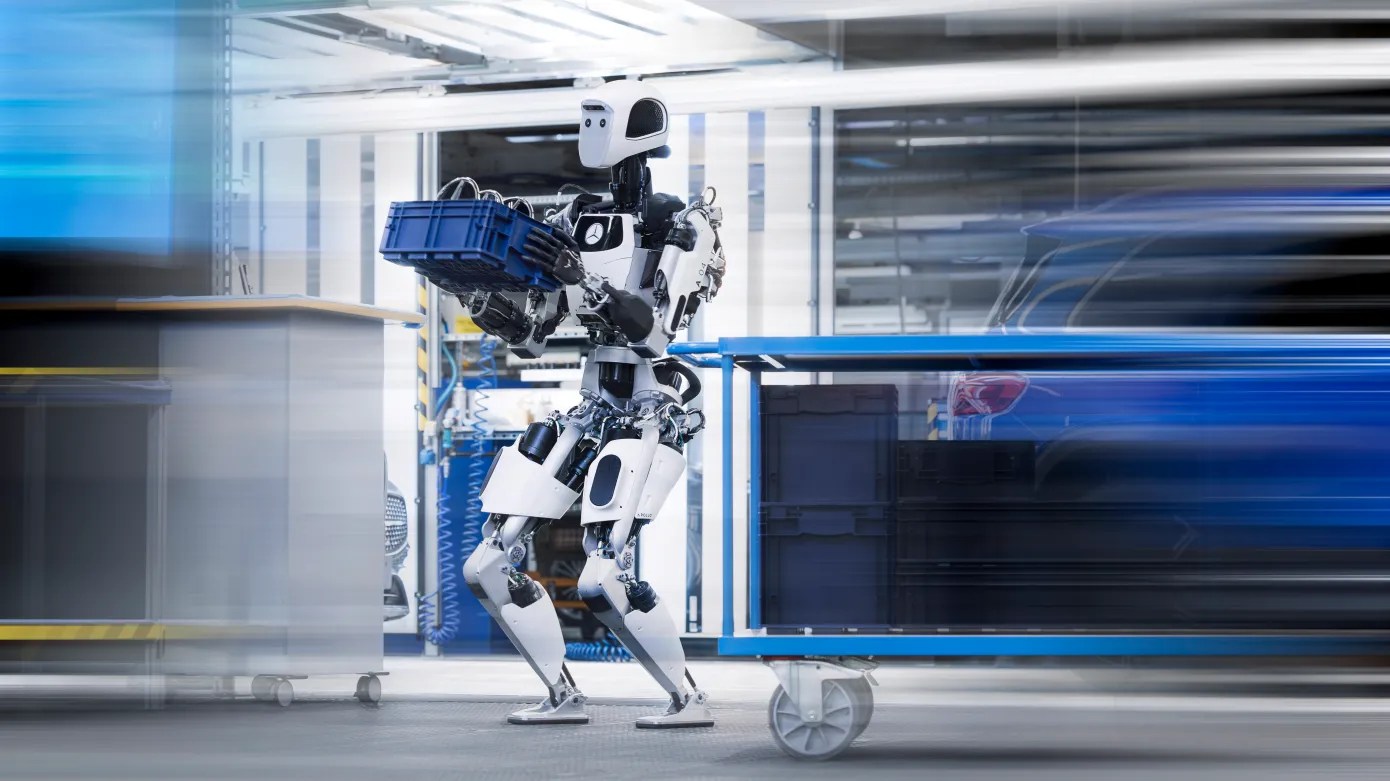Robots made their stage debut the day after New Yr’s 1921. Greater than half-a-century earlier than the world caught its first glimpse of George Lucas’ droids, a small military of silvery humanoids took to the levels of the First Czechoslovak Republic. They had been, for all intents and functions, humanoids: two arms, two legs, a head — the entire shebang.
Karel Čapek’s play, R.U.R (Rossumovi Univerzální Roboti), was a success. It was translated into dozens of languages and performed throughout Europe and North America. The work’s lasting legacy, nevertheless, was its introduction of the phrase “robotic.” The which means of the time period has developed a superb bit within the intervening century, as Čapek’s robots had been extra natural than machine.
A long time of science fiction have, nevertheless, ensured that the general public picture of robots hasn’t strayed too removed from its origins. For a lot of, the humanoid type remains to be the platonic robotic splendid — it’s simply that the state of expertise hasn’t caught as much as that imaginative and prescient. Earlier this week, Nvidia held its personal on-stage robotic parade at its GTC developer convention, as CEO Jensen Huang was flanked by photos of a half-dozen humanoids.
Whereas the notion of the idea of the general-purpose humanoid has, in essence, been round longer than the phrase “robotic,” till just lately, the belief of the idea has appeared wholly out of grasp. We’re very a lot not there but, however for the primary time, the idea has appeared over the horizon.
What’s a “general-purpose humanoid?”

Picture Credit: Nvidia
Earlier than we dive any deeper, let’s get two key definitions out of the way in which. After we discuss “general-purpose humanoids,” the very fact is that each phrases imply various things to totally different folks. In conversations, most individuals take a Justice Potter “I do know it after I see it” strategy to each in dialog.
For the sake of this text, I’m going to outline a general-purpose robotic as one that may rapidly decide up expertise and basically do any job a human can do. One of many huge sticking factors right here is that multi-purpose robots don’t out of the blue go general-purpose in a single day.
As a result of it’s a gradual course of, it’s troublesome to say exactly when a system has crossed that threshold. There’s a temptation to go down a little bit of a philosophical rabbit gap with that latter bit, however for the sake of holding this text below ebook size, I’m going to go forward and transfer on to the opposite time period.
I obtained a little bit of (largely good-natured) flack after I referred to Reflex Robotics’ system as a humanoid. Folks identified the plainly apparent incontrovertible fact that the robotic doesn’t have legs. Placing apart for a second that not all people have legs, I’m superb calling the system a “humanoid” or extra particularly a “wheeled humanoid.” In my estimation, it resembles the human type carefully sufficient to suit the invoice.
Some time again, somebody at Agility took concern after I referred to as Digit “arguably a humanoid,” suggesting that there was nothing controversial about it. What’s clear is that robotic isn’t as trustworthy an try and recreate the human type as a few of the competitors. I’ll admit, nevertheless, that I could also be considerably biased having tracked the robotic’s evolution from its precursor Cassie, which extra carefully resembled a headless ostrich (pay attention, all of us went by means of an ungainly interval).
One other factor I have a tendency to think about is the diploma to which the humanlike type is used to carry out humanlike duties. This factor isn’t completely mandatory, however it’s an vital a part of the spirit of humanoid robots. In spite of everything, proponents of the shape issue will rapidly level out the truth that we’ve constructed our worlds round people, so it is smart to construct humanlike robots to work in that world.
Adaptability is one other key level used to defend the deployment of bipedal humanoids. Robots have had manufacturing unit jobs for many years now, and the overwhelming majority of them are single-purpose. That’s to say, they had been constructed to do a single factor very properly a variety of instances. Because of this automation has been so well-suited for manufacturing — there’s a variety of uniformity and repetition, notably on the planet of meeting traces.
Brownfield vs. greenfield

Picture Credit: Brian Heater
The phrases “greenfield” and “brownfield” have been in widespread utilization for a number of many years throughout varied disciplines. The previous is the older of two, describing undeveloped land (fairly actually, a inexperienced discipline). Developed to distinction the sooner time period, brownfield refers to improvement on present websites. On the earth of warehouses, it’s the distinction between constructing one thing from scratch or working with one thing that’s already there.
There are execs and cons of each. Brownfields are usually extra time and cost-effective, as they don’t require ranging from scratch, whereas greenfields afford to alternative to constructed a web site completely to spec. Given infinite sources, most companies will go for a greenfield. Think about the efficiency of an area constructed ground-up with automated programs in thoughts. That’s a pipedream for many organizers, so when it comes time to automate, a majority of corporations hunt down brownfield options — doubly so once they’re first dipping their toes into the robotic waters.
Given that the majority warehouses are brownfield, it ought come as no shock that the identical might be stated for the robots designed for these areas. Humanoids match neatly into this class — actually, in a variety of respects, they’re among the many brownest of brownfield options. This will get again to the sooner level about constructing humanoid robots for his or her environments. You may safely assume that the majority brownfield factories had been designed with human employees in thoughts. That always comes with parts like stairs, which current an impediment for wheeled robots. How massive that impediment finally is depends upon a variety of components, together with format and workflow.
Child steps

Picture Credit: Determine
Name me a moist blanket, however I’m a giant fan of setting reasonable expectations. I’ve been doing this job for a very long time and have survived my share of hype cycles. There’s an extent to which they are often helpful, when it comes to constructing investor and buyer curiosity, however it’s completely too simple to fall prey to overpromises. This consists of each said guarantees round future performance and demo movies.
I wrote in regards to the latter final month in a submit cheekily titled, “Tips on how to faux a robotics demo for enjoyable and revenue.” There are a selection of the way to do that, together with hidden teleoperation and inventive enhancing. I’ve heard whispers that some companies are dashing up movies, with out disclosing the data. The truth is, that’s the origin of humanoid agency 1X’s title — all of their demos are run in 1X pace.
Most within the area agree that disclosure is vital — even mandatory — on such merchandise, however there aren’t strict requirements in place. One might argue that you just’re wading right into a authorized grey space if such movies play a job in convincing traders to plunk down massive sums of cash. On the very least, they set wildly unrealistic expectations among the many public — notably those that are inclined to take truth-stretching executives’ phrases as gospel.
That may solely serve to hurt those that are placing within the arduous work whereas working in actuality with the remainder of us. It’s simple to see how hope rapidly diminishes when programs fail to reside as much as these expectations.
The timeline to real-world deployment incorporates two major constraints. The primary is mechatronic: i.e. what the {hardware} is able to. The second is software program and synthetic intelligence. With out getting right into a philosophical debate round what qualifies as synthetic normal intelligence (AGI) in robots, one factor we are able to actually say is that progress has — and can proceed to be gradual.
As Huang famous at GTC the opposite week, “If we specified AGI to be one thing very particular, a set of checks the place a software program program can do very properly — or perhaps 8% higher than most individuals — I imagine we’ll get there inside 5 years.” That’s on the optimistic finish of the timeline I’ve heard from most consultants within the discipline. A variety of 5 to 10 years appears widespread.
Earlier than hitting something resembling AGI, humanoids will begin as single-purpose programs, very similar to their extra conventional counterparts. Pilots are designed to show out that these programs can do one factor properly at scale earlier than transferring onto the following. Most individuals are taking a look at tote transferring for that lowest-hanging fruit. After all, your common Kiva/Locus AMR can transfer totes round all day, however these programs lack the cellular manipulators required to maneuver payloads on and off themselves. That’s the place robotic arms and finish effectors are available in, whether or not or not they occur to be connected to one thing that appears human.
Chatting with me the opposite week on the Modex present in Atlanta, Dexterity founding engineer Robert Solar floated an fascinating level: humanoids might present a intelligent stopgap on the way in which to lights out (absolutely automated) warehouses and factories. As soon as full automation is in place, you gained’t essentially require the flexibleness of a humanoid. However can we moderately anticipate these programs to be absolutely operational in time?
“Transitioning all logistics and warehousing work to roboticized work, I believed humanoids could possibly be a superb transition level,” Solar stated. “Now we don’t have the human, so we’ll put the humanoid there. Ultimately, we’ll transfer to this automated lights-out manufacturing unit. Then the difficulty of humanoids being very troublesome makes it arduous to place them within the transition interval.”
Take me to the pilot

Picture Credit: Apptronik/Mercedes
The present state of humanoid robotics might be summed up in a single phrase: pilot. It’s an vital milestone, however one which doesn’t essentially inform us every little thing. Pilot bulletins arrive as press releases saying the early stage of a possible partnership. Each events love them.
For the startup, they signify actual, provable curiosity. For the massive company, they sign to shareholders that the agency is participating with the state-of-the-art. Not often, nevertheless, are actual figures talked about. These usually enter the image once we begin discussing buy orders (and even then, usually not).
The previous yr has seen a variety of these introduced. BMW is working with Determine, whereas Mercedes has enlisted Apptronik. As soon as once more, Agility has a head begin on the remainder, having accomplished its pilots with Amazon — we’re, nevertheless, nonetheless ready for phrase on the following step. It’s notably telling that — regardless of the long-term promise of general-purpose programs, nearly everybody within the area is starting with the identical fundamental performance.
Two legs to face on

Picture Credit: Brian Heater
At this level, the clearest path to AGI ought to look acquainted to anybody with a smartphone. Boston Dynamics’ Spot deployment gives a transparent real-world instance of how the app retailer mannequin can work with industrial robots. Whereas there’s a variety of compelling work being achieved on the planet of robotic studying, we’re a methods off from programs that may determine new duties and proper errors on the fly at scale. If solely robotics producers might leverage third-party builders in a way much like phonemakers.
Curiosity within the class has elevated considerably in latest months, however talking personally, the needle hasn’t moved an excessive amount of in both path for me since late final yr. We’ve seen some completely killer demos, and generative AI presents a promising future. OpenAI is actually hedging its bets, first investing in 1X and — extra just lately — Determine.
Loads of sensible folks place confidence in the shape issue and loads of others stay skeptical. One factor I’m assured saying, nevertheless, is that whether or not or not future factories can be populated with humanoid robots on a significant scale, all of this work will quantity to one thing. Even probably the most skeptical roboticists I’ve spoken to on the topic have pointed to the NASA mannequin, the place the race to land people on the temper led to the invention of merchandise we use on Earth to this present day.
We’re going to see continued breakthroughs in robotic studying, cellular manipulation and locomotion (amongst others) that may impression the function automation performs in our each day life a technique or one other.

